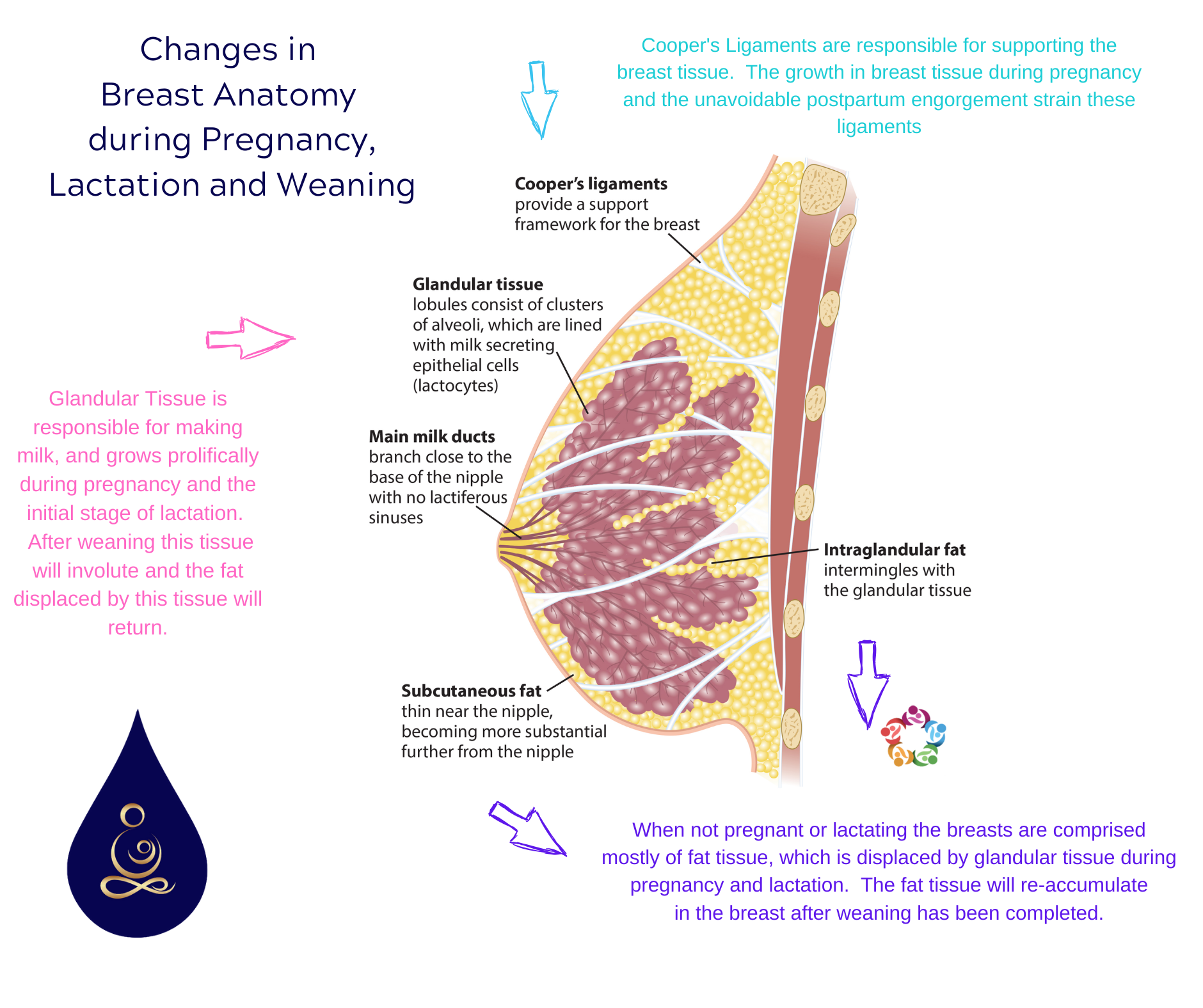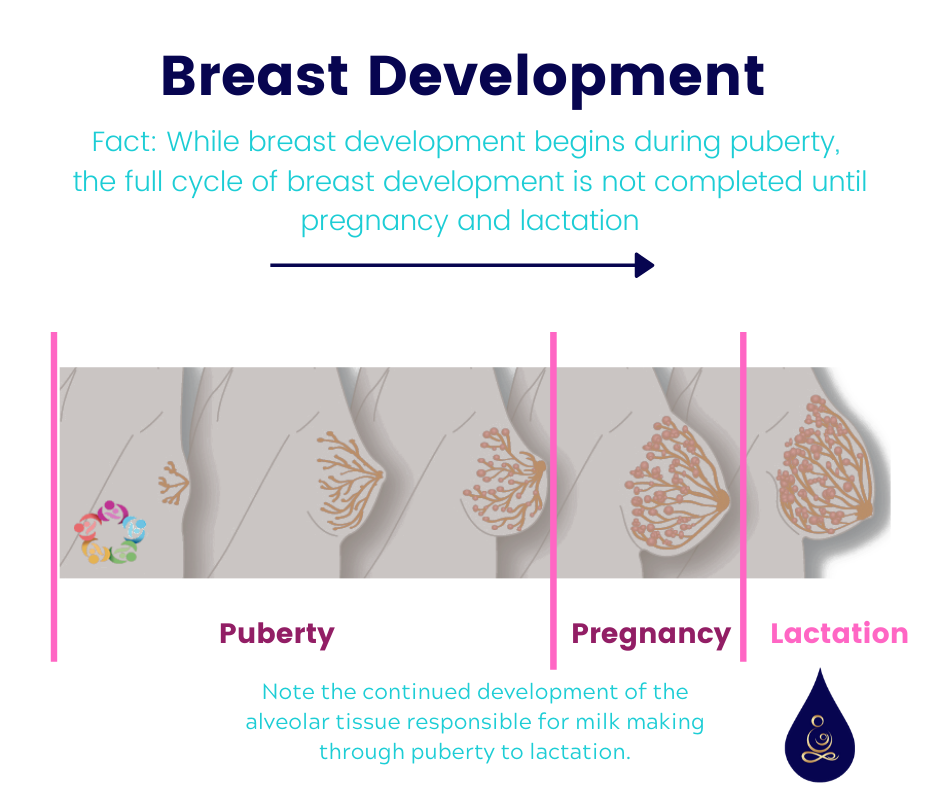Does Breastfeeding Cause Saggy Breasts?
Many people are concerned about the impact of breastfeeding on their breasts’ appearance. This is totally normal concern, pregnancy and breastfeeding bring about a lot of changes in your body. Having these concerns is a normal part of the journey when having a baby, but understanding the actual causes of these changes is important when factoring these concerns into your decisions about infant feeding.
Breast development begins while a baby is still in the womb, but the most noticeable part of the breast development process occurs during puberty. During puberty the breasts develop a more robust maze of glandular tissue, and acquire much of the fat tissue that provides them with their shape. The Ligament's responsible for holding the breast tissue up are the Cooper's Ligaments, and in your youth they are at the strongest they will ever be.
Breastfeeding gets the bad rap of being the cause of saggy breasts. While it is true that many women will find that once pregnancy and breastfeeding are behind them their breasts look different, breastfeeding is not the act at fault here. In a culture that hyper-sexualizes breasts this can be somewhat distressing for women who are not as satisfied with this new appearance. I hate to say it though mamas, the fate of your breasts was already sealed when you discovered you were expecting your sweet baby.
Once a woman is pregnant her body kicks off a hormonal process that causes the next phase in breast development where the mammary tissue grows abundantly in preparation for nourishing the baby after birth. Remember the sore breasts and tender nipples? Byproduct of all the hormones kicking breast development into overdrive. During this process some of the fat tissue in the breast is actually displaced by the mammary tissue. The loss of fat isn't noticed as the overall breast size typically increases.
After the placenta is delivered the next phase of breast development happens, and even more mammary tissue is established, and the breasts often grow to their largest size within just a few days of birth because of engorgement. Thankfully things regulate shortly, and your breast tissue responds to the stimulation provided. If you are breastfeeding your breasts will continue making milk, and you will likely find that you maintain the increased size for the duration of your breastfeeding journey. If you are not breastfeeding the lack of stimulation will lead to the involution of the mammary tissue and you will experience a decrease in breast size. If this is immediately postpartum you will likely not notice such a dramatic shift as this will occur at the same time the rest of your body is rapidly changing as well.
If you are breastfeeding and rapidly wean, you have likely already undergone the other lovely postpartum body changes, and that leads to an increased notice of the changes to your breast. The good news here is the initial loss of breast size when weaning is temporary to some degree as the fat displaced during the pregnancy and early lactation will return to your breasts soon. They may not look as you remember them pre-baby, but they will fill out a little bit. If you breastfeed for an extended period of time and slowly wean you will actually find this process of loss of mammary tissue and replacement with fat happens gradually, so while your breasts do not appear as they did before you had a baby, they also don't necessarily go through any obviously noticeable transition.
So will your breasts be a little saggier after having a baby and breastfeeding? They very well might. Your breasts are incredible organs that underwent dramatic changes to provide the perfect food for your baby. Your Cooper's Ligaments have taken a bit of a beating with all the size changes and development. Having children can change your body as well as your life. Be kind to yourself as you learn to love this new body, and if you just weaned take comfort in knowing it might get a bit better soon.
View Related Articles…





